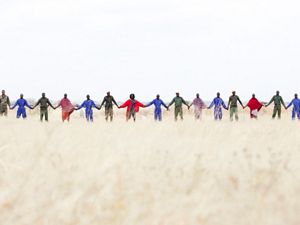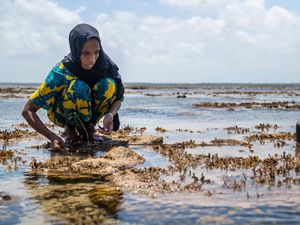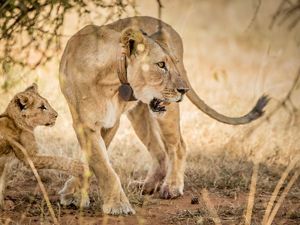Fighting Fire with Fire
To protect Zambia’s wilderness, we’re using targeted bush burns to cut late-season fires
Across a stretch of pristine Zambian wilderness, close to a safari lodge where minutes earlier tourists spotted a magnificent bull elephant, a fire was rapidly taking hold in head-high grass.
Bush blazes are a feature of this southern African country, where millions of acres of woodlands shade lush grass that slowly parches to spark-ready tinder through the long dry season.
Ferocious wildfires used to march annually across more than half of the 8,600-square-mile Kafue National Park, Africa’s fourth largest, which is roughly the size of New Jersey.
But like an increasing number of fires today, this one is a ‘controlled burn’. It was started on purpose, as part of training by specialists from The Nature Conservancy’s Arkansas Chapter here teaching Zambian counterparts to use fire as a tool to manage fragile environments.
“Fire controls an ecosystem, and what we’re aiming to do is use the destructive power of fire positively,” said Jones Masonda, the Principal Ecologist at Zambia’s Department of National Parks and Wildlife.
The idea is that by setting a controlled burn early in the dry season, Mr Masonde says, you reduce the amount of dry grass, undergrowth, and fallen tree branches that would fuel intense and unstoppable infernos later in the year.
They harm environments and local economies because scorched landscapes deter the wildlife that the quarter-million tourists who holiday in Zambia annually pay handsomely to see. Tourism earns the country $500m a year, and employs 60,000 Zambians, according to the Ministry of Tourism and Arts.
“The reaction of guests to an area that’s had a late season fire is one of horror, I’ve actually seen them in tears,” says Gil Dickson, General Manager and co-owner of the Kaingu Safari Lodge, a small luxury camp on the banks of the Kafue River.
“They automatically assume that the fire means a permanently destroyed landscape, even though that's not the case. It's hugely damaging.”
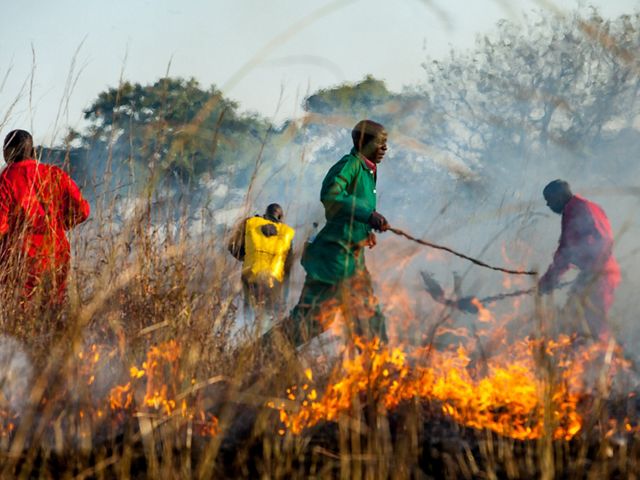
The TNC training — now in its sixth year — is offered not just to Mr Masonde’s parks department, but also to everyone operating in the ecosystem, including Mr Dickson and his team of lodge staff and bush guides.
Everyone is taught how to use special metal gas canisters that ‘drip’ fire precisely along prescribed lines, and then to control flames with beaters and ‘bladders’ worn like rucksacks, which spray targeted streams of water to stop blazes dead.
“The controlled burns make it easier for tourists to see wildlife, they bring animals out to graze on the grass that grows after a fire, and arguably most importantly, they protect these areas from late season fires,” Mr Dickson says.
That increases wildlife densities, which brings more tourists, and more revenue. But beyond fires, Zambia's wildernesses also face a second major threat: poachers.
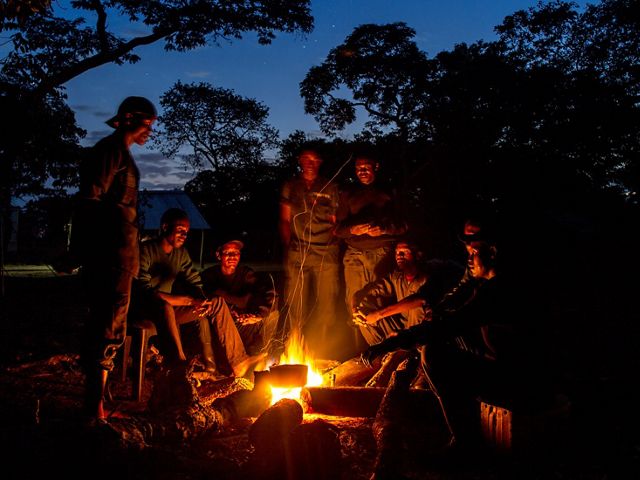
Several hours drive north of Mr Dickson's lodge, but still bordering Kafue National Park, is Kaindu Game Ranch, where TNC helped the local community to take over management of their land, making them direct beneficiaries of tourism dollars.
So far, says Prudence Mwanza, a community liaison assistant in a village called Misamba, they have built a kitchen and bathrooms at a nearby hospital, refurbished a 250-pupil primary school, and built a small chemist’s in a remote hamlet.
But to keep the funds flowing for these community projects, they need more tourists and trophy hunters to visit. For that, as well as avoiding late season bush fires, they need more wildlife.
The animals’ surprising saviour is a man named Greenwell Kabinda, known to everyone as ‘Green’. For close to 20 years he was a poacher himself, responsible for killing 21 elephants and uncounted hippos, buffaloes, and gazelles.
Poverty drove him to do it, he says: “When you are desperate you have no option, and you just think of poaching to get something to feed yourself”.
It is that understanding of the motivations that drive people illegally to kill wild animals, added to his extraordinary bush skills, that make Green the ideal commander of the Kaindu Community Scouts.
This small force of 24 rangers, all recruited from local communities, patrols the Game Ranch and adjacent areas to keep poachers at bay and collect wildlife data.
Since 2015, when TNC boosted their capacity with decent tents, uniforms, GPS handsets, and regular wages, they have arrested 48 poachers.
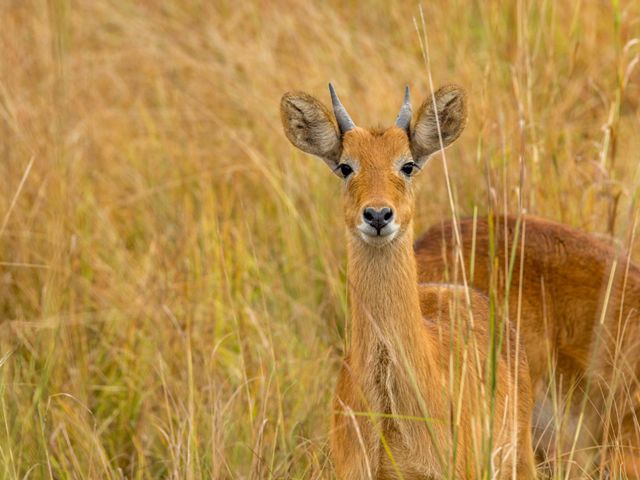
“I love this job,” says Misheck Mwanza, one of the rangers. He used to be a security guard at at a supermarket in the capital. “No way do I want to go back to that,” he says. “Here I’m earning a salary that helps my family, plus it’s really satisfying to do something for conservation that also benefits the community.”
The Nature Conservancy sees multiple advantages for Zambians and their natural resources from investing in both the fire training and the community conservation project, says Victor Siamudaala, the organisation’s country director here.
“Making sure that local people see real and present dividends from their wildlife is key to making them its primary protectors,” he says. “Managing fire means there is more park to see, and more wildlife in it. Then deploying community rangers adds another layer of protection against poaching and habitat degradation.
“In the long term, the idea is we’ll see better habitats, more wildlife, more tourists, and more revenues for local communities. It’s a win-win-win.”

